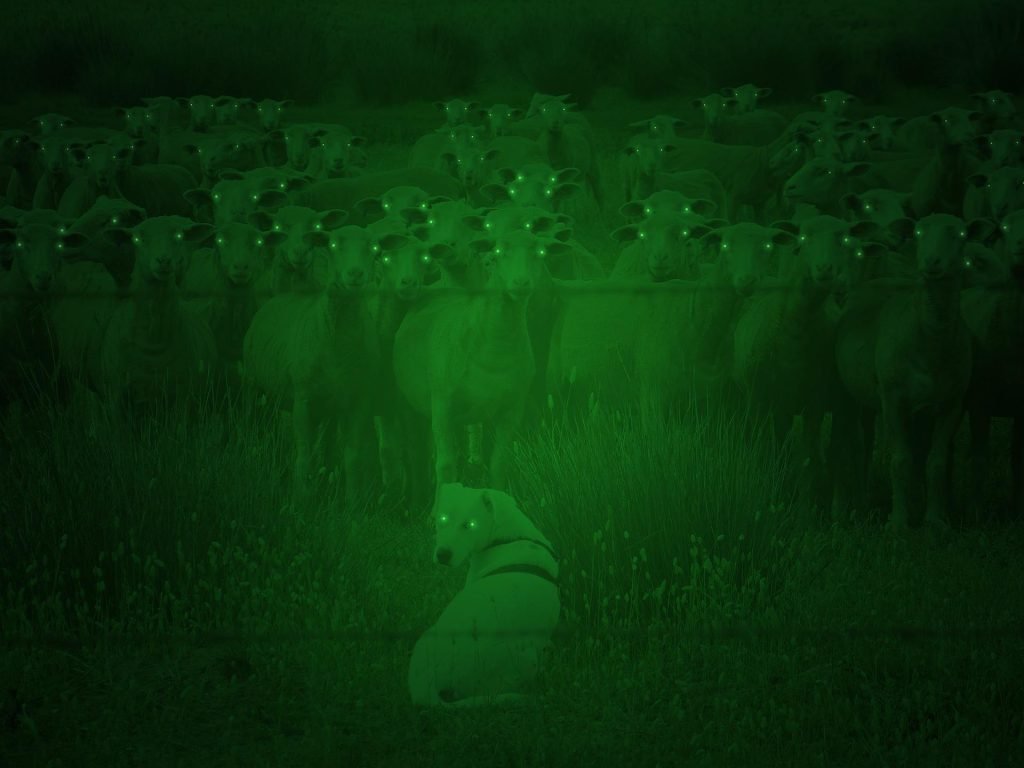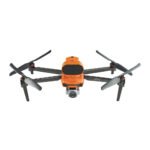Introduction
Importance of Night Vision Cameras
Night vision cameras play a crucial role in enhancing visibility in darkness, a feature paramount for various applications. Imagine being able to see clearly in low-light conditions, allowing you to capture critical moments or ensure safety during nighttime operations. These cameras, equipped with advanced technology, enable individuals and organizations to conduct essential tasks that would otherwise be hindered by the absence of light. They provide:
- Enhanced Safety: In security operations, night vision cameras can detect intruders or monitor environments without alerting them, keeping properties secure.
- Search and Rescue Operations: They assist rescue teams during night missions, helping to locate lost individuals or assess emergency situations effectively.
- Wildlife Monitoring: Researchers also utilize these cameras to study animal behavior, capturing activities that would be missed during daylight hours.
The importance of these tools cannot be overstated as they have transformed how we approach security, safety, and research in dimly lit environments.
Evolution of Drone Technology
When combined with drone technology, night vision cameras are changing the landscape of aerial imaging. Over the past decade, drones have evolved from basic remote-controlled models into sophisticated unmanned aerial vehicles (UAVs) equipped with state-of-the-art features. I remember the first time I piloted a basic drone; it was clumsy and limited to daylight operations. Now, with advances in technology, drones equipped with night vision capabilities have become invaluable assets. Key advancements in drone technology include:
- Improved Stability and Control: Modern drones feature enhanced stabilization systems, allowing for smooth flights even in challenging conditions.
- Advanced Camera Systems: High-resolution cameras paired with night vision allow for exceptional imagery in darkness, essential for various applications.
- Extended Flight Time: Innovations in battery technology have significantly increased flight durations, enabling prolonged missions even at night.
This evolution poses exciting possibilities. For instance, a wildlife conservationist can now monitor endangered species at night without disrupting their natural habitat, thanks to drones with integrated night vision cameras. Similarly, law enforcement agencies use night-flying drones to enhance surveillance and intervention capabilities during night operations. The synergy between night vision cameras and drone technology isn’t just a trend; it’s a game-changer, continually opening doors for different industries and applications. As you explore this intersection, it becomes evident how both technologies work hand in hand to improve efficiency, safety, and research methodologies in previously inaccessible environments. The future of innovation in these fields promises even more exciting developments ahead, setting the stage for a brighter, albeit darker, aerial vision.
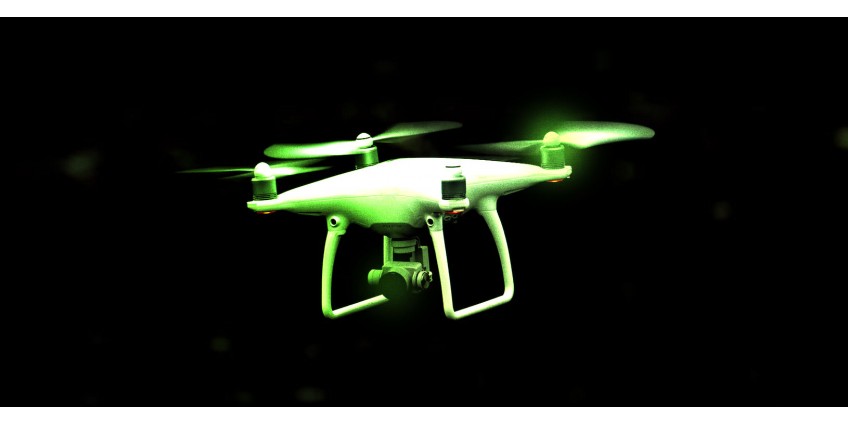
How Drone Night Vision Cameras Work
Infrared Technology Overview
Understanding how drone night vision cameras work begins with a peek into infrared technology. Unlike regular cameras that rely on visible light to capture images, infrared cameras detect the heat emitted by objects. This means they can “see” even in complete darkness, which is what makes them so valuable for night operations. Here’s how it breaks down:
- Heat Detection: Infrared cameras identify thermal energy. Objects at different temperatures emit different levels of infrared radiation, allowing the camera to create a visual representation based on heat.
- Image Formation: The camera converts the detected thermal signals into a colored image, where warmer areas appear bright and cooler spots show up darker. This contrast enables operators to distinguish features in a scene.
- Wide Applications: From search-and-rescue missions to wildlife surveillance, infrared technology offers unparalleled advantages. For example, a search and rescue team can spot a person in distress even if they’re hidden behind thick foliage by simply detecting their body heat.
Personal anecdotes about using infrared technology, whether for security or nighttime adventures, can illustrate its effectiveness. I recall one instance where a group of friends used a drone equipped with an infrared camera during a camping trip to track wildlife at night. It was fascinating to see deer and other nocturnal animals moving about, their figures glowing against the backdrop of the dark foliage.
Low Light Imaging Capabilities
In addition to infrared sensors, modern drone night vision cameras often utilize advanced low-light imaging technologies. These systems amplify available light, such as moonlight or starlight, to create clearer images in dim conditions. Here’s a closer look at what this entails:
- Image Intensification: This technology enhances low-level light, making it viable for clearer imaging. It works by capturing photons and amplifying their impact. This results in images that are significantly brighter than standard low-light visuals.
- Combining Technologies: Many drones now utilize both infrared and low-light imaging. This dual capability enables a clearer understanding of the environment by providing detailed images in total darkness and low-light situations alike.
- User-Friendly Interfaces: More recent advancements have made these systems easier to operate. Operators can seamlessly toggle between infrared and low-light views via intuitive controls.
When I first tested a drone with low-light imaging, it was astonishing to see how much detail I could capture in what I thought was near-darkness. The camera’s ability to reveal minute details like texture and color—even in dim settings—made night operations feel less daunting and incredibly productive. Together, these technologies empower drones to overcome the challenges posed by low-light environments. The synergy of infrared detection and low-light imaging is revolutionizing fields like security, search and rescue, environmental monitoring, and more. As we continue to explore this fascinating intersection, the potential for more advanced discoveries looms ever larger.
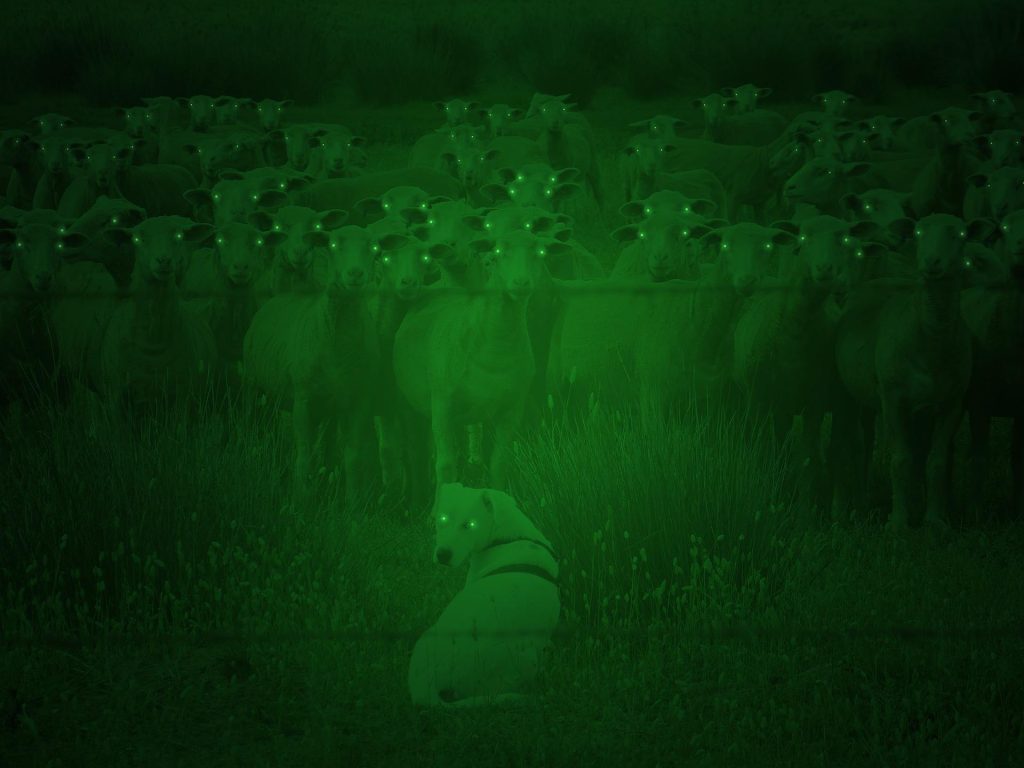
Applications of Drone Night Vision Cameras
Search and Rescue Operations
Drones equipped with night vision cameras have become indispensable tools in search and rescue (SAR) operations. When time is of the essence, these technological marvels can make a significant difference. With the ability to effectively navigate dark environments, rescuers can locate missing persons with remarkable efficiency. Here’s why they shine in this area:
- Access to Hard-to-Reach Areas: Drones can easily maneuver into rugged terrains, dense forests, or disaster-struck zones, allowing rescuers to cover ground quickly without risking personnel in treacherous situations.
- Real-Time Video Feed: The integration of live-streaming capabilities ensures ground teams receive immediate visual information, aiding in strategizing further efforts. This collaboration can significantly enhance the chances of a successful outcome.
- Thermal Imaging for Heat Signatures: In cases of missing hikers or lost children, these drones can detect heat signatures from bodies, even through foliage, turning what could be a long, exhausting search into a more targeted operation.
Personally, I remember hearing about a local SAR team that utilized drone technology during a particularly challenging rescue mission in a mountainous region. Using a night vision-equipped drone, they spotted a hiker stranded over a mile away from the trail, ultimately leading to a successful rescue when conventional methods would have taken hours longer.
Surveillance and Security Purposes
Beyond rescue missions, the applications of drone night vision cameras extend into the realm of surveillance and security. Organizations, law enforcement agencies, and even private security teams are now leveraging this technology to enhance their operations. Key benefits include:
- Discreet Monitoring: Night vision cameras allow security personnel to monitor properties without drawing attention, which is especially useful for facilities prone to theft or vandalism. This stealth mode can deter potential intruders who aren’t aware they’re being watched.
- Crowd Management: During events or demonstrations, drones can provide a bird’s-eye view of crowds, assisting law enforcement in identifying unusual activities or potential threats in real-time.
- Environmental Surveillance: These cameras can be employed to monitor wildlife, illegal poaching, or even environmental violations, revealing activities that may be invisible during daylight.
There’s a compelling anecdote from a community that integrated drone surveillance into their neighborhood watch program. One evening, the drone captured footage of suspicious activity at a vacant property. The timely intervention of law enforcement, backed by the drone footage, led to the apprehension of trespassers attempting to vandalize the site. It showcased not only the efficiency of drones in surveillance but also how technology could foster community safety. As you can see, the utility of drone night vision cameras spans far and wide, from life-saving missions to safeguarding our neighborhoods. The possibilities are set to expand as further advancements in technology emerge, making our world safer and more efficient, even under the cover of darkness.

Advantages of Using Night Vision Cameras on Drones
Enhanced Visibility in Low-Light Conditions
One of the standout advantages of using night vision cameras on drones is the enhanced visibility they provide during low-light conditions. For anyone who’s ever been outside at night, you know how challenging it can be to navigate in the dark. Imagine trying to conduct a survey, track wildlife, or even ensure safety in your neighborhood when the sun goes down—difficult, right? This is where night vision cameras truly shine. Here’s how improved visibility makes a tangible difference:
- Real-Time Clarity: With advanced infrared sensors, night vision cameras capture details that are invisible to the naked eye. This allows operators to monitor and assess situations immediately, regardless of how dark it is.
- Reduced Blind Spots: Drones equipped with these cameras can hover and look around, eliminating the blind spots typical of ground-based surveillance. Just picture having that aerial perspective gained overnight.
- Distinguishing Features at Night: You can identify objects and even people based on thermal signatures. In search and rescue operations, understanding whether it’s a person or an animal can make all the difference.
During a recent nighttime drone training session, I witnessed the transformation firsthand. The instructor launched a drone with a night vision camera, and within minutes, we could see the mesmerizing shapes of trees and wildlife. It was incredible to realize how easily we could locate objects that were entirely obscured in darkness—something that would have taken hours if done by foot.
Increased Safety and Efficiency
Along with enhanced visibility, the integration of night vision cameras on drones significantly boosts safety and operational efficiency. It’s essential, especially when working in high-stakes environments like law enforcement or emergency response. Here are some ways this technology contributes:
- Safer Operations: Drones can operate from a distance, eliminating the need for personnel to venture into hazardous areas. For example, during a building fire, a drone can fly over the site to assess the situation and guide firefighters—keeping everyone out of harm’s way.
- Time Savings: Night vision capabilities allow for quicker assessments and decisions. Imagine needing to locate a missing person in a dense forest. Not only does the drone expedite the search process, but the thermal radar also makes it a more precise mission.
- Resource Optimization: Using drones decreases reliance on more costly equipment such as manned helicopters or extensive ground teams. Resources can be better allocated, streamlining efforts without sacrificing effectiveness.
I remember attending a community security briefing where local law enforcement used drone technology for real-time surveillance during a neighborhood event. The officers shared how they identified potential disturbances before they escalated, all thanks to the drones’ capabilities. It was a clear example of how night vision drones can enhance safety for everyone involved. The advantages of deploying night vision cameras on drones are compelling. From enhancing visibility in low-light situations to offering a safer and more efficient operational approach, these technologies are proving to be essential in a variety of fields. The implications for future applications are both exciting and promising, forging a path toward solutions we haven’t yet imagined.
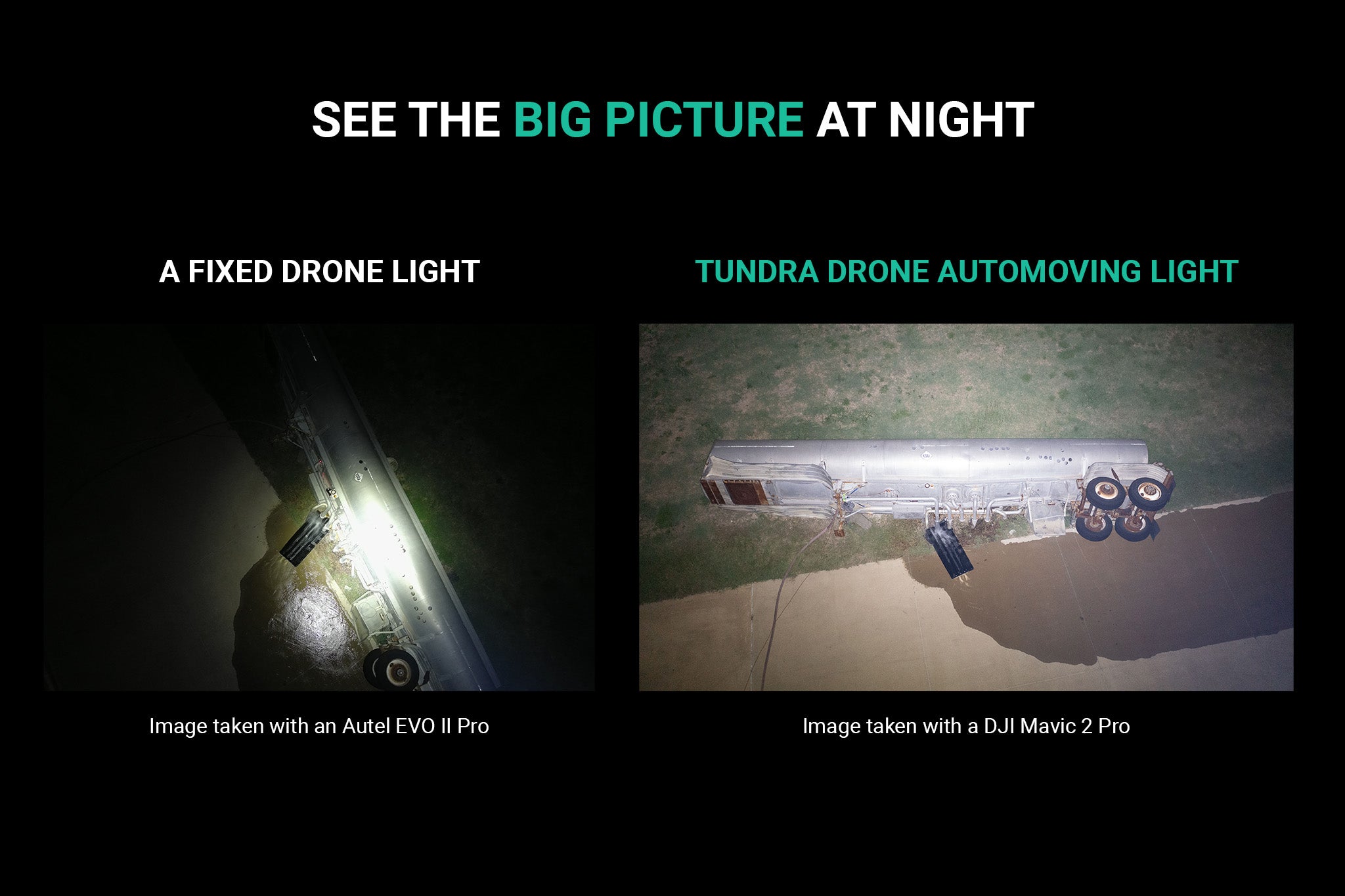
Challenges and Limitations
Limited Range and Resolution
While the benefits of drone night vision cameras are impressive, there are still significant challenges and limitations that users must navigate. One of the most notable hurdles is the limited range and resolution of these systems, which can restrict their effectiveness in certain scenarios. Let’s break down this issue:
- Range Limitations: Many night vision cameras have a defined operational range. Most can see clearly only within specific distances before the image quality diminishes. For instance, if you’re trying to monitor an area that spans several miles, a single drone might not provide adequate coverage without additional support.
- Resolution Constraints: While night vision technology has come a long way, some cameras still struggle to deliver high-resolution images in total darkness. This can result in blurry or pixelated visuals, making it difficult to identify crucial details, especially in security or search and rescue situations.
- Battery Life: Drones running night vision cameras often consume more power due to the increased processing required. This can limit flight time and range, forcing operators to plan missions carefully to avoid running out of battery mid-task.
I remember participating in a wildlife monitoring project where we relied heavily on drone technology to survey a large conservation area. While the night vision capabilities were fantastic for spotting animals, we quickly ran into limitations. Our drone could only cover a part of the area before needing to be recharged—definitely a challenge when monitoring nocturnal wildlife activities.
Regulatory Restrictions
In addition to the technical limitations, regulatory restrictions pose a significant challenge for anyone looking to utilize drone night vision cameras effectively. Drone operations are often governed by stringent laws designed to ensure safety and privacy. Here are a few critical points regarding regulatory concerns:
- Airspace Regulations: Various countries have different regulations regarding where and when drones can operate, particularly at night. This can limit your ability to launch night operations in certain areas, especially near airports or densely populated regions.
- Privacy Issues: There’s a growing concern about privacy violations when deploying aerial surveillance. Users must navigate complex legalities surrounding where they can film and what they can capture without infringing on individual rights. This concern can discourage organizations from fully utilizing drone night vision capabilities, fearing potential legal repercussions.
- Licensing Requirements: In some regions, operating drones for commercial purposes requires specific licenses and permissions. This adds an additional layer of complexity for those intending to use night vision drones in business contexts, such as security services or surveys.
At a recent community meeting, I was fascinated to hear local law enforcement discuss their frustrations with regulatory restrictions impacting their drone initiatives. They emphasized how these regulations often hindered their ability to respond to emergency situations effectively, showcasing a real-world example of the trade-off between public safety and regulatory compliance. In summary, while night vision cameras on drones offer tremendous potential, it’s crucial to be aware of their limitations in range and resolution, as well as the regulatory landscape governing their use. Navigating these challenges requires careful planning, creativity, and a commitment to remaining compliant with existing laws. Understanding these barriers will empower users to make informed decisions moving forward.
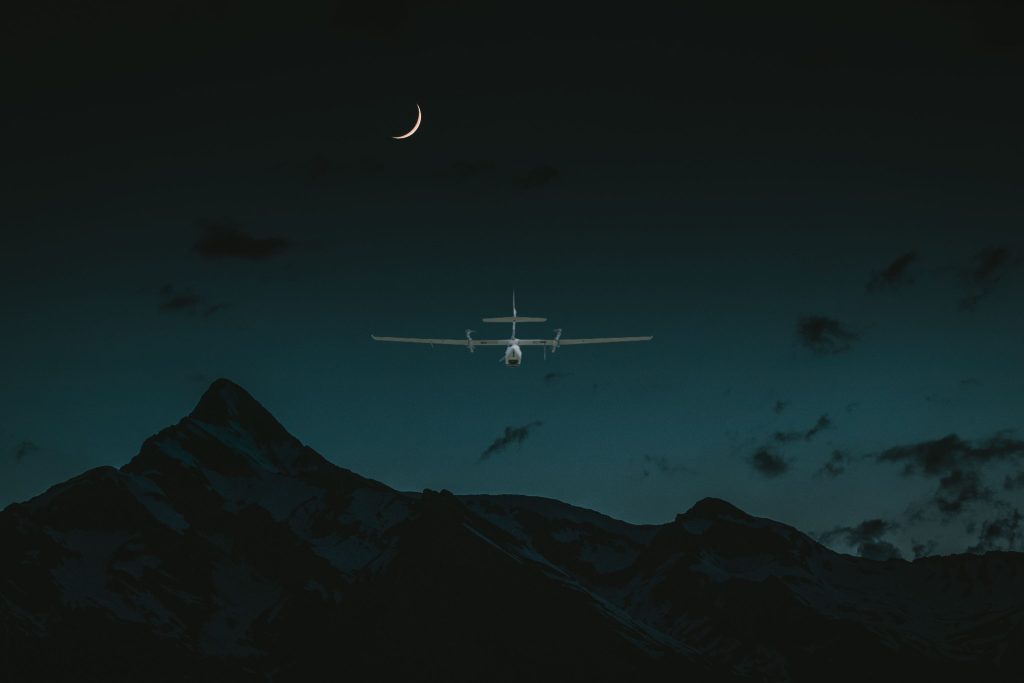
Future Developments in Drone Night Vision Technology
Integration of AI and Machine Learning
As we look to the future, one of the most exciting areas of development in drone night vision technology is the integration of artificial intelligence (AI) and machine learning. These technologies hold the potential to revolutionize how drones operate in low-light scenarios, making them smarter, more efficient, and capable of decision-making that previously required human intervention. Here’s what you can expect from this integration:
- Automated Object Recognition: Imagine drones being able to distinguish between various animals, humans, and even vehicles in total darkness. AI can enhance the capability of night vision cameras by learning to identify specific thermal signatures, making search and rescue missions more effective.
- Real-Time Data Analysis: Machine learning can enable drones to process vast amounts of data in real-time. This means they can adapt their flight paths, focus, and strategies based on the changing environment, enhancing both efficiency and accuracy during operations.
- Predictive Maintenance: On a more technical level, AI could also monitor drone performance, predicting when maintenance is required based on usage patterns. This feature would keep drones operational and prolong their lifespan.
For instance, I recently read about a wildlife conservation organization that integrated AI with their drone systems. This allowed them to monitor poaching activities more effectively by automatically alerting rangers when suspicious movement was detected in the darkness. Such technological advancements not only save time but also enhance safety for the rangers in the field.
Improvements in Thermal Imaging
While AI and machine learning represent the future of drone night vision technology, improvements in thermal imaging remain equally vital. As we progress, thermal imaging is expected to become more sophisticated, providing clearer and more detailed images in varying conditions. Here’s how thermal imaging technology is likely to evolve:
- Higher Resolution Imagery: Future thermal cameras are likely to offer much higher resolutions, which means clearer images. This advancement will enable operators to identify finer details in their surroundings, enhancing situational awareness during missions.
- Broader Spectral Range: Researchers are exploring sensors that can capture a wider range of infrared wavelengths. This could allow drones to detect even more subtle temperature changes, making it easier to spot individuals or activities in complex environments.
- Enhanced Low-Temperature Performance: Improvements in thermal imaging will potentially allow for better performance in extremely cold conditions. This capability will open up new possibilities for missions in challenging climates, whether for search and rescue operations in deep winter or monitoring wildlife in the frigid wilderness.
I once saw a demonstration of an upgraded thermal imaging camera mounted on a drone during a tech expo. The clarity and detail were astonishing! The operator was able to identify not just heat signatures but also the animals’ movements, showcasing how these improvements could enhance scientific research on wildlife behavior. As we explore these promising developments in drone night vision technology, it’s clear that the future is bright. The integration of AI and machine learning, along with advancements in thermal imaging, will lead to smarter drones capable of making more informed decisions. These innovations are set to open new avenues in various fields, from security and public safety to wildlife conservation and environmental monitoring. The horizon for drone technology is filled with potential, and we can’t wait to see where it leads!
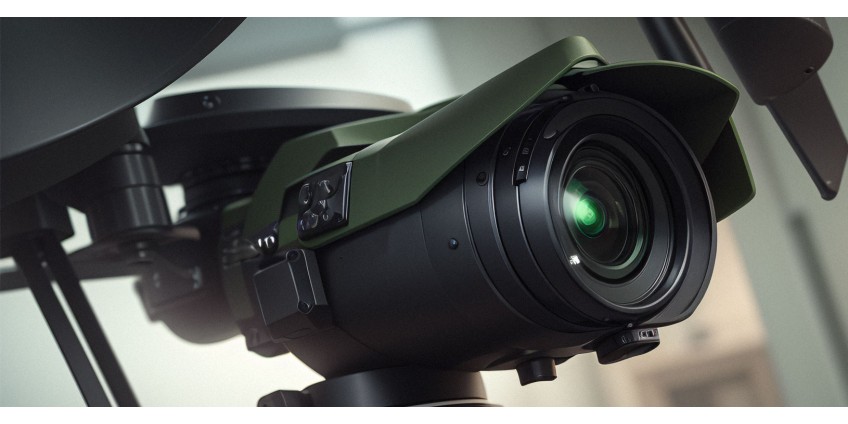
Case Studies
Successful Applications of Drone Night Vision Cameras
To understand the transformative impact of drone night vision cameras, it’s helpful to explore a few real-world case studies where these technologies have been successfully implemented. These examples highlight how drones have made significant contributions across various fields.
- Search and Rescue Operations in Natural Disasters: In 2020, during a hurricane in the southeastern United States, emergency responders deployed drones equipped with night vision cameras to locate stranded individuals in flooded areas. The drones provided aerial visibility that was crucial for assessing the situation and guiding rescue teams to those in need.
- Wildlife Conservation: A notable case involved a conservation organization in Africa using drones with thermal imaging to combat poaching. By conducting nighttime surveillance of protected areas, they successfully detected poachers’ movements and reduced illegal hunting activities. The improved detection not only safeguarded endangered species but also enhanced ranger safety by allowing for preemptive interventions.
- Law Enforcement Operations: A police department in California implemented drones with night vision capabilities during a nighttime foot chase. They managed to track a suspect hiding in a densely wooded area. The thermal imaging allowed the officers to pinpoint the individual’s location, leading to a swift and safe apprehension, showcasing how these tools can facilitate law enforcement operations while minimizing risks.
My own experiences attending a tech conference highlighted several of these applications, where operators shared powerful testimonials of how drone night vision made a life-or-death difference. The enthusiasm among the presenters and the responses from the audience highlighted the real-world implications of these technologies.
Lessons Learned from Real-World Scenarios
While the successes are commendable, there are also lessons to be learned from these scenarios. Analyzing what went right (and what didn’t) helps improve tactics and technology in future operations.
- The Importance of Training: In many of the case studies observed, operator training emerged as a critical factor in the success of night vision drone missions. For instance, police departments that invested time in training their personnel saw much more effective outcomes. Failing to prepare adequately can lead to miscommunications and missed opportunities.
- Collaborative Efforts: Successful outcomes were often the result of collaborative efforts among different organizations. In the wildlife conservation case, partnerships between tech companies and local wildlife authorities were crucial. This collaboration ensured a shared understanding of goals and strategies, leading to enhanced operational effectiveness.
- Flexibility in Operations: Several case studies revealed that adaptability during missions significantly influenced success rates. For instance, when conditions changed unexpectedly, teams that could quickly alter their plans based on real-time data—like weather shifts or unexpected obstacles—achieved better results.
Reflecting on these lessons illustrates the multi-faceted nature of deploying drone night vision technology. As we witness more of these successful applications in the field, there’s a wealth of knowledge to be gathered that can address the challenges and leverage the strengths of this innovative technology. It’s a continuous journey of improvement that ultimately supports better outcomes across various disciplines.

Best Practices for Using Drone Night Vision Cameras
Proper Maintenance and Calibration
To ensure the best performance from your drone night vision cameras, proper maintenance and calibration are essential. Like any piece of technology, drones require regular upkeep to function optimally. Neglecting this can lead to compromised performance when you need it most. Here are some best practices for maintaining your equipment:
- Regular Inspections: Before each flight, take a moment to inspect the drone and the night vision camera. Look for any signs of wear or damage, such as loose connections, cracks, or dirt accumulation on lenses. A thorough pre-flight check can catch issues early and prevent accidents.
- Calibration Procedures: Calibration is critical for night vision cameras, especially to ensure accurate readings of thermal signatures. Follow the manufacturer’s recommendations to calibrate the camera according to environmental conditions. This often involves testing under various lighting conditions to ensure accuracy.
- Battery Care: Night vision drones often consume significant battery power. Be sure to keep batteries charged and stored properly to extend their lifespan. This includes avoiding extreme temperatures and routinely cycling the batteries to maintain their health.
I remember a particular instance when I was part of a drone operation for wildlife monitoring. We encountered challenges not due to the drone itself but because the camera had not been calibrated correctly. We missed spotting several animals, which were visible once we recalibrated the camera later in the evening.
Training and Skill Development
Equipping your team with the right skills to operate drone night vision cameras is equally important. Such training not only enhances operational efficiency but also ensures the safety of all involved. Consider these points when building training programs:
- Comprehensive Familiarization: Start with comprehensive training that covers not only the operation of drones but also specific aspects of night flying and the nuances of night vision technology. This should include understanding how to interpret thermal images and effectively maneuver the drone in low-light conditions.
- Simulation and Practice: Use simulation tools and practice sessions to build confidence among operators. Simulating different nighttime scenarios can prepare them for real-world challenges. Even a sunny daytime practice session can prove beneficial as it builds foundational skills without the added strain of low visibility.
- Continuous Learning: Encourage operators to pursue continuous learning opportunities, such as webinars or workshops related to drone technology and night vision. This keeps them informed of the latest advancements and best practices.
I recall attending an advanced drone training workshop that changed the way I viewed aerial operations at night. Listening to experts share real-life applications, challenges, and solutions deepened my understanding of the potential of these technologies. It reinforced the importance of skill development for anyone involved in operating drone night vision cameras. In summary, integrating best practices in maintenance and training can significantly enhance the effectiveness of drone night vision cameras. By prioritizing proper upkeep and investing in skill development for operators, you position yourself for success in nighttime operations, ensuring that your team is prepared for the challenges and opportunities that arise in the dark.
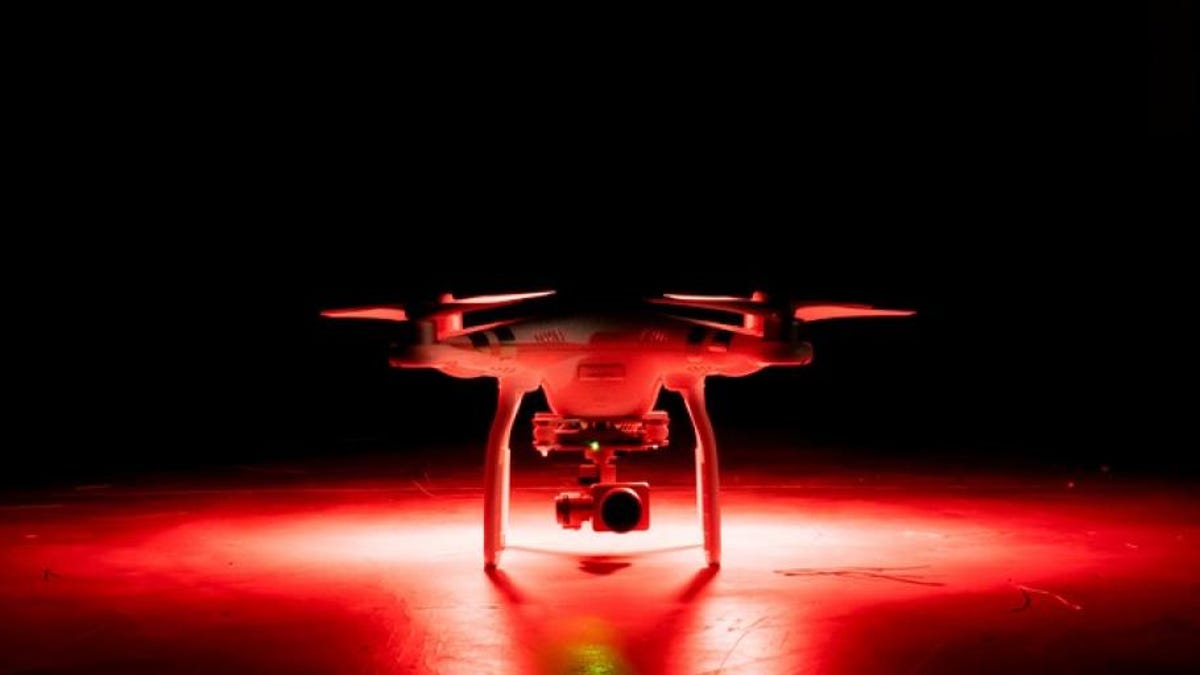
Ethical Considerations
Privacy Concerns
As drone night vision technology becomes increasingly common, ethical considerations, particularly concerning privacy, play a critical role in its deployment. The ability of these drones to capture high-resolution images and video in low-light situations raises pressing questions about privacy infringement. Here are some vital aspects to consider:
- Informed Consent: One of the main privacy concerns revolves around obtaining informed consent from individuals in the area of operation. Drones can unintentionally invade personal spaces during surveillance missions, so it’s crucial to establish guidelines for when and where drones can operate without infringing on individual privacy rights.
- Public Spaces vs. Private Spaces: Understanding the difference between monitoring public and private spaces is essential. While flying over public areas may be permissible, capturing images that invade people’s personal lives—like peering into their backyards—could lead to significant ethical and legal dilemmas.
- Community Engagement: Involving the community in discussions about drone operations can be beneficial. For example, a local law enforcement agency may choose to hold public forums to explain their use of drone technology for surveillance during events or in specific neighborhoods. This transparency helps foster trust and understanding among residents.
I recall attending a community meeting where police explained how they intended to use drones for monitoring public gatherings. While most residents understood the need for enhanced security, some expressed concerns about being watched. This conversation underscored the importance of open dialogue and the need for clear policies that respect privacy rights while serving the community.
Data Security Measures
In addition to privacy concerns, data security is another critical aspect of using drone night vision cameras. With the wealth of information gathered during operations, protecting this data is paramount to prevent unauthorized access and misuse. Here are several best practices for ensuring data security:
- Encryption: Always use strong encryption methods for data collected during drone flights. This will protect sensitive information from being intercepted or accessed by unauthorized personnel. Encryption helps ensure that any data transmitted is secure and cannot be easily compromised.
- Access Control: Implement strict access controls to limit who can view and manage collected data. By restricting access to only authorized users, you significantly reduce the risk of data breaches. Establish role-based access controls whereby only necessary personnel can access sensitive footage and images.
- Regular Audits: Conducting regular audits of data management practices can help identify vulnerabilities. Keeping systems updated and performing periodic checks ensures compliance with both ethical standards and legal requirements.
I once attended a training session focused on data security for drone operators, where experts stressed the significance of taking proactive measures. A case study highlighted how a small drone service provider had suffered a data breach due to lax security practices. It was a stark reminder of the importance of vigilance in safeguarding data. In conclusion, as drone night vision technology continues to evolve, ethical considerations, particularly around privacy and data security, will remain crucial. By implementing practices that respect individual rights and safeguard information, operators can navigate the moral complexities associated with this powerful technology. Establishing a thoughtful approach will not only enhance the responsible use of drones but also build trust within the communities they serve.

Conclusion
Summary of Key Findings
As we’ve explored throughout this article, drone night vision technology is transforming various fields by enhancing visibility and providing crucial insights in low-light conditions. Here are some of the key findings from our discussion:
- Enhanced Operational Efficiency: Drones equipped with night vision cameras significantly improve search and rescue operations, wildlife monitoring, and security surveillance. The ability to see and assess situations that are otherwise inaccessible at night empowers users to make informed decisions quickly.
- Challenges in Implementation: Despite the advantages, challenges such as limited range, resolution issues, and regulatory restrictions remain. Understanding and addressing these challenges is vital for maximizing the potential of drone technology.
- Ethical Considerations: The rapid adoption of drone technology has prompted discussions about privacy concerns and data security. Engaging with the community and establishing transparent guidelines are essential in mitigating these concerns while ensuring responsible usage.
- Future Advancements: The integration of AI and machine learning, alongside improvements in thermal imaging, are paving the way for smarter, more efficient drones. Embracing these innovations will enhance capabilities and applications, setting the stage for a bright future in drone operations.
During my research, I was inspired by how different organizations are leveraging drone technology creatively and responsibly. For instance, a conservation group I learned about used drones not only for poaching prevention but also for gathering valuable data on wildlife populations—showcasing the multifaceted benefits of this incredible technology.
Recommendations for Future Use
Looking forward, there are several recommendations that can help maximize the effectiveness and ethical use of drone night vision cameras:
- Invest in Operator Training: Continuous education and training for drone operators are paramount. Whether through simulated exercises or hands-on workshops, investing in skill development will ensure efficient and safe operations.
- Focus on Maintenance Protocols: Establish a routine maintenance and calibration schedule for all drone equipment. By prioritizing upkeep, organizations can avoid typical operational issues and ensure reliable performance.
- Develop Clear Policies: Engage with stakeholders and communities to create clear, transparent policies that address privacy and data security concerns. Developing these guidelines will foster trust and understanding among the public.
- Stay Informed on Regulatory Changes: As regulations continue to evolve, it’s crucial to keep abreast of any new laws or guidelines affecting drone operations. This awareness will help organizations stay compliant and proactively adapt their practices.
In conclusion, the journey of integrating drone night vision technology is as rewarding as it is complex. By focusing on ethical practices, skilled operation, and community engagement, the potential for positive impact is immense. Embracing these recommendations will not only enhance operational effectiveness but also ensure that this technology serves its purpose responsibly, paving the way for innovative applications that can benefit society as a whole.
